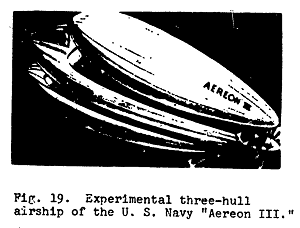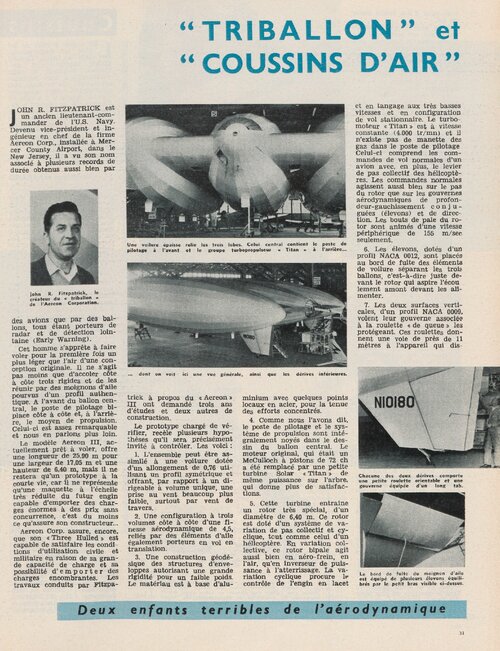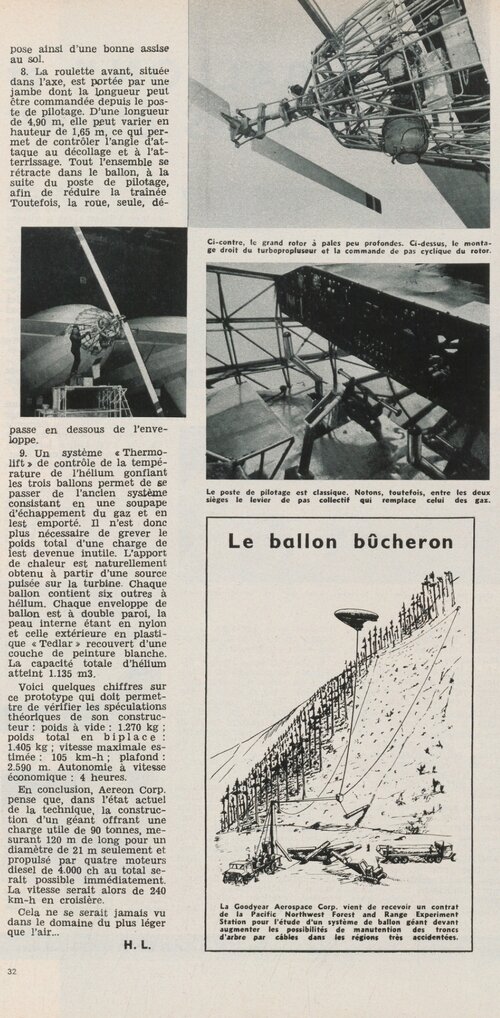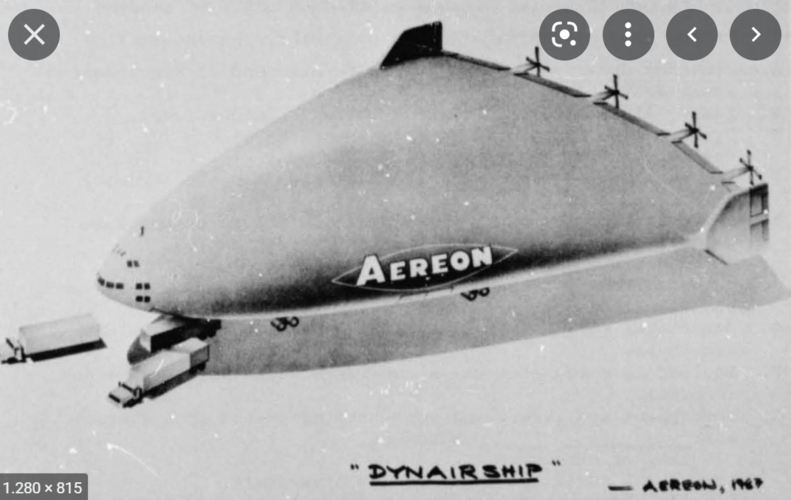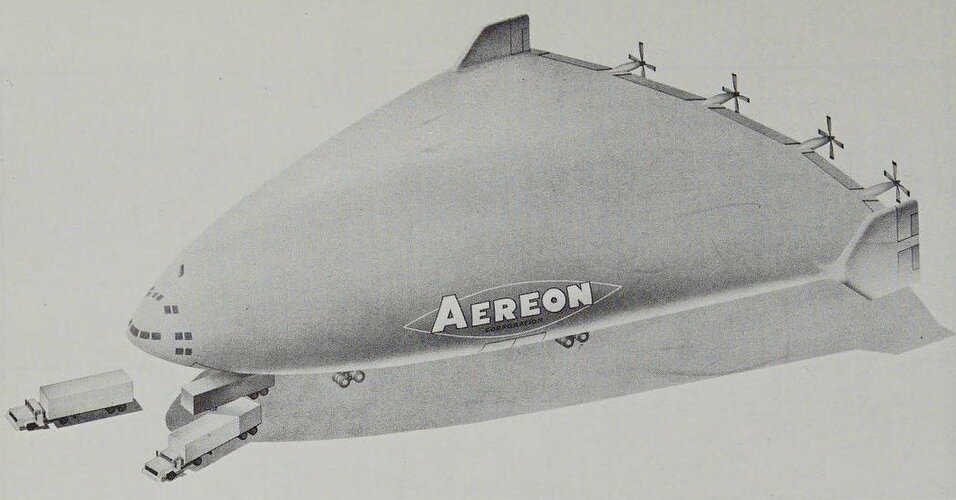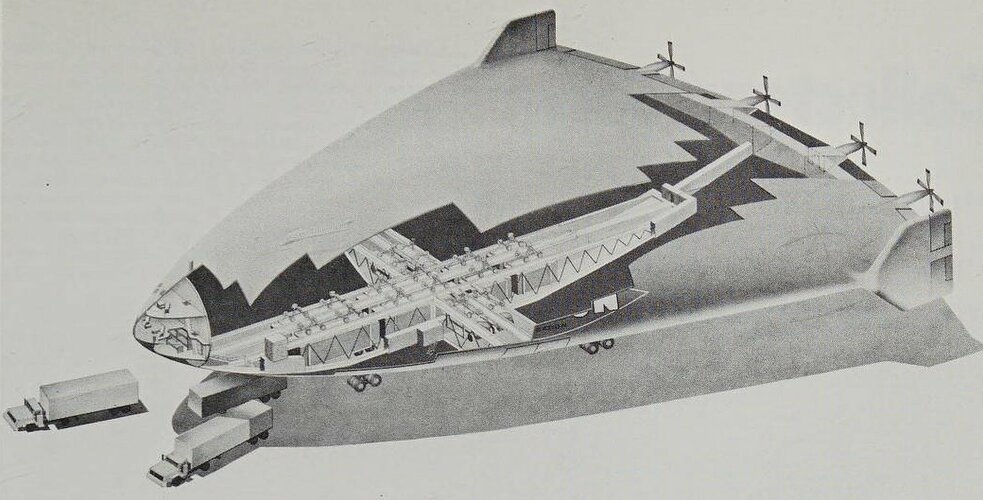- Joined
- 12 July 2006
- Messages
- 918
- Reaction score
- 614
Overscan, is it allowed to create a thread regarding airships  ?
?
Around 1964 the US company Aereon built an interesting nameless(?) airship.
1. Did it ever fly?
2. Is the marked area (see arrow) the cabin for pilot and second person?
3. Has it a name/designation?
4. I'm still looking for a 3-view ...
Here are a few specs:
length : 25.90 m
width : 17.05 m
height : 6.40 m
empty weight (not inflated) : 1,270 kg
gross weight incl. two persons : 1,400 kg
maximum speed : 105 km/h
service ceiling : 2,600 m
flight endurance : 4 h
Around 1964 the US company Aereon built an interesting nameless(?) airship.
1. Did it ever fly?
2. Is the marked area (see arrow) the cabin for pilot and second person?
3. Has it a name/designation?
4. I'm still looking for a 3-view ...
Here are a few specs:
length : 25.90 m
width : 17.05 m
height : 6.40 m
empty weight (not inflated) : 1,270 kg
gross weight incl. two persons : 1,400 kg
maximum speed : 105 km/h
service ceiling : 2,600 m
flight endurance : 4 h



